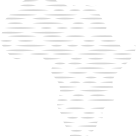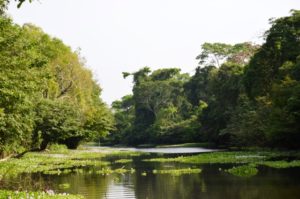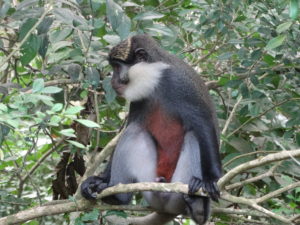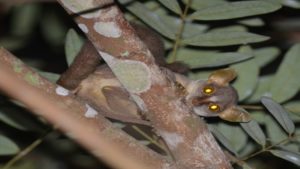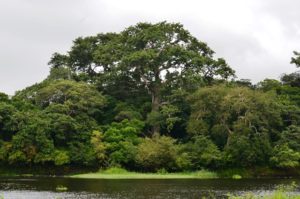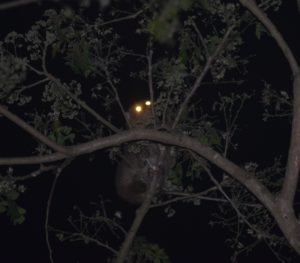In Benin, the rainforest is confined to forest fragments in the south, mostly community forests that host the 3 endangered primate species and about 70% of threatened plants of Benin. Thus, community-based forest protection is key to conserving wildlife and their essential habitats in South Benin. Since 2011, my colleagues and I at Organisation pour le Développement Durable et la Biodiversité, a non-profit organization I co-founded spearhead the protection of threatened primates and their habitats through research, education and community development. Our team has an interest in the distribution, ecology, social behaviour, dietary ecology, and population trends of primates in the Dahomey Gap.
Benin and Togo, two countries located at the centre of the Dahomey Gap, a distinctive ecoregion between the Upper and Lower Guinean Forest Blocks in West Africa contain some unique flora and fauna. In southern Benin, the rainforest is confined to tiny forest fragments, mostly sacred or community forests that are further threatened and diminished by logging and rampant urbanization. Today, these forests cover <2% of the national territory, yet harbour about two-thirds of all IUCN red-listed plants. These centres of biodiversity in a rural or semi-urban, highly populated environment are mostly located in the flood plain of the Ouémé river. Firewood collection, uncontrolled timber exploitation and agricultural fields expansion are the main drivers of primate and other wildlife’s habitat destruction and fragmentation. These pressures are exacerbated for about a decade by transhumant shepherds as pasture is increasingly scarce in northern Benin as a consequence of climate change and countless conflicts with farmers. Primates and forest-dwelling wildlife thrive in these human-modified landscapes where human-monkeys conflict is inevitable and on the rise. Primate diversity is high only in swamp forests, gallery forests are difficult to access and the encounter rate for generalist primates like the mona monkey is very low.
LinkedIn | ResearchGate | Twitter
